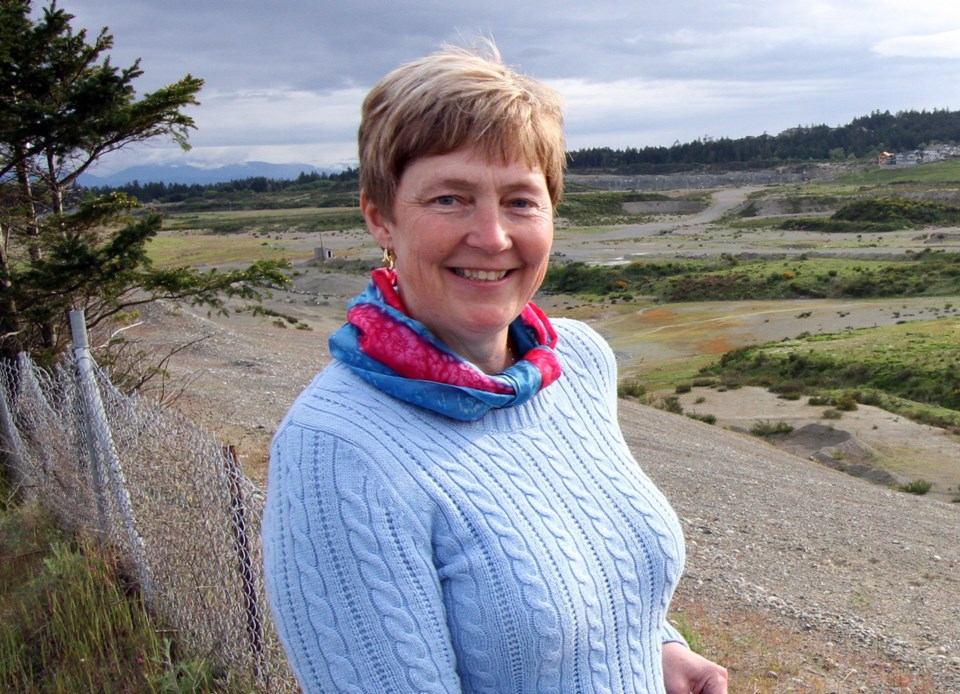It will probably cost Colwood $1 million to develop its sewage treatment plant to the shovel-ready stage, says Michael Baxter, the municipality’s director of engineering.
The municipality is using a $25-million sewage treatment plant being built in Sechelt as a potential model for the Colwood Resource Recovery Centre.
The municipality has spent about $20,000 on sewage treatment plans to date, and Baxter is recommending it sole-source a $139,000 contract to Aqua-Tex Scientific to serve as the project advisory team. Of the estimated $1 million, council has authorized $350,000 in gas-tax funding to be spent by March 31, 2015.
In a report to the transportation and public infrastructure committee this week, Baxter noted that Sechelt was originally part of its regional district’s liquid waste management plan for sewage treatment but decided to go forward on its own under the Municipal Wastewater Regulations. “Staff are examining this move to see how it might apply to Colwood’s position,” Baxter said in his report.
Colwood has been looking at putting its plant underground at the B.C. Transit park-and-ride near the Juan de Fuca Rec Centre and is exploring the potential for building a six-storey commercial-residential building on top.
“Sechelt had to raise almost $25 million to build the plant and associated works. Over 50 per cent was raised through grants that are only available for very innovative projects,” Baxter said.
The owners of 2,300 connected properties in Sechelt will each pay about $379 a year toward construction and maintenance of the plant, which has room for additional users, he said.
“The plant is capable of handling 4,000 cubic metres on opening day and with minor upgrades will be able to handle a population of 14,000, which is about double Colwood’s currently connected equivalent population.”
Baxter said if Sechelt proves a good model, “Colwood could also provide greater capacity than the CRD is providing for two-thirds the CRD cost.”
But, he noted, there are some differences:
• Sechelt did not need to build an outfall, where Colwood will have to build an in-ground disposal system by about 2020, resulting in higher costs.
• The Sechelt plant is above ground. The Colwood plant is likely to be almost completely hidden and use a cheaper system at a lower cost.
• The Sechelt plant included no residential or commercial space. Colwood will include both, generating some property sales revenue up front.
• Colwood could build a smaller plant, meaning lower initial costs.
• It is unknown whether Colwood would be able to get the same level of grants as Sechelt did.
Colwood Mayor Carol Hamilton has put forward a motion calling on the CRD to support those municipalities and First Nations wanting to develop their own approaches to sewage treatment. The resolution calls for any money collected from the municipalities by the CRD for regional sewage treatment, as well as senior government grants, to be redirected back to municipalities.
It marks a change in direction from Colwood, which initially said it would forgo senior government grants in order to go it alone.
But with Esquimalt refusing to rezone McLoughlin Point for a regional plant, the landscape has changed, Hamilton said.
“Our sense on it is if we are operating within the core area liquid waste management plan, yes, there may well need to be some amendment made, but the funding stays within that plan,” Hamilton said.
Meanwhile, the West Shore Developers Association came out Monday in support of a “westside” option for sewage treatment being touted by Hamilton, Esquimalt Mayor Barb Desjardins and Langford Mayor Stew Young.
“I think what the westside mayors have been proposing is that this sub-regional option is the way that looks like it would make the most sense,” said association spokesman Mike Klassen.



